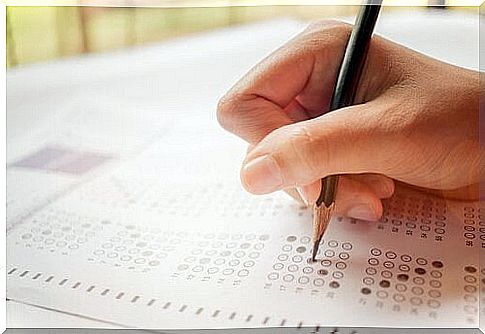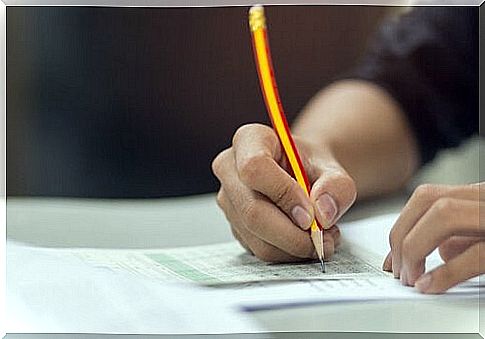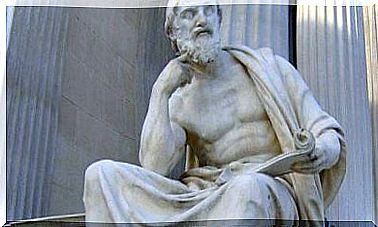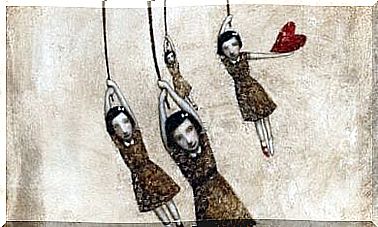The Classical Test Theory

The classical test theory was first described by Spearman in the 20th century . In a sense, it can be seen as the beginning of psychometrics. The word “test” refers to tests to assess knowledge, skills or functions.
In psychology, tests are psychological or psychotechnical evaluations, in a sense tools that have been developed to assess or measure the characteristics of a subject.
Why do we need test theories?
Tests are instruments that in many cases offer invaluable help in the context of a psychological assessment. For this to be achieved, the test must meet minimum psychometric requirements and the specialist using it must know and adhere to the relevant protocol. On the other hand, test theories tell us how we can assess the quality of a test result and, in many cases, how we can refine the application in order to reduce the error to a minimum. In this sense, perhaps the most important concepts within classical test theory are reliability and validity.
- Reliability is the consistency or stability of measurements when the measurement process is repeated. Basically, 100 percent reliability is a utopia, because in practice it is impossible to reproduce the same conditions in two different measurements. It is relatively easy to manipulate external variables such as B. the temperature or the noise level; however, the control of the internal parameters is much more complicated. For example, consider the patient’s mood.
- The validity or validity refers to the degree to which empirical evidence and theory support the interpretation of test results. We could also say that validity is the ability of a measuring instrument to meaningfully and appropriately dimension the characteristic for which it is intended.
Two important theories are used in the setting up and validation of tests. The first is classical test theory, the second is probabilistic test theory. In the following we present the most important aspects of classical test theory.

The classic test theory
This approach is the one more commonly used in the creation and analysis of tests. The psychologist, like any other professional, must ensure that the instrument he is using measures accurately and without errors. So when a psychologist uses a test on one or more people, he gets the corresponding test results. However, these do not provide any information about the reliability of these values: We do not know whether they correspond to the values that should actually be assigned to this person.
For example, it could happen that unrealistic results were achieved because the person examined did not feel comfortable that day. Or because the physical conditions under which the test was carried out were not the best.
The answers given by one person in a test are therefore compared quantitatively or qualitatively with the answers of other people who have taken the same test. A classification can then be made. However, this classification is not as straightforward as it might seem.
“As psychologists, we have an obligation to ensure that our test results and interpretations are as correct as possible and have few errors.”
José Muñiz
The classic linear model
It is in the early twentieth century, as we have noted, when Spearman proposed the classical test theory. The researcher postulated a very simple model for assessing the test results: the classic linear model.
This model is based on the assumption that the number of points a person scores on a test, which we call the empirical score, and which is usually denoted by the letter X, has two components. The first is the true value (V) and the second is the error (e). The latter can be due to many causes that we cannot always control. The hypothesis could be expressed as follows: X = V + e
In classical test theory, it is now a matter of precisely determining the measurement error. With this in mind, Spearman added three assumptions to the model:
- The true value (V) is the mathematical expectation of the empirical value. For example, the V in a test is defined as the number of points that a patient would receive on average if they completed the same test an infinite number of times.
- There is no relationship between the true scores and the size of the errors that affect these values. The value of the true score is independent of the measurement error.
- Measurement errors in a particular test are not related to measurement errors in any other test. Errors made in one run do not have to be the same as those of another.

Classical test theory is pretty easy to understand. You do not need advanced mathematical knowledge to put it into practice and it can be applied in any context. The problem is that the results it gives us are always linked to the sample in which the test was validated. In addition, in many cases the minimum requirements that a test must meet in order to be considered reliable and validated are insufficient. Further procedures are therefore required to evaluate the tests used and, if necessary, to improve them.









